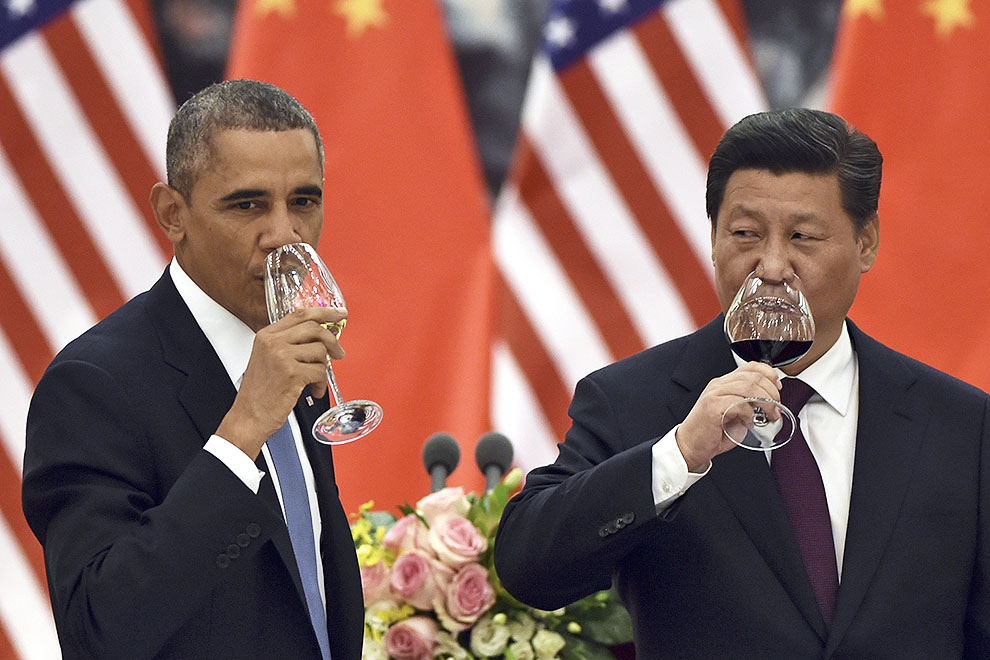It wasn’t so long ago that communities ignored many of the threats we now respond to without question. When smoking was common in the 1960s most people thought it was harmless. Emissions of sulphur dioxide, chemical compounds and other particles were largely ignored until the 1980s, when increasing awareness of “acid rain” triggered coordinated action among leaders including British prime minister Margaret Thatcher and US president George H.W. Bush.
Today, two perceived threats are treated remarkably differently. The relatively low risk of terrorism has escalated to the point where nations are intruding on citizens’ liberties to a degree normally associated with times of full-scale war. The much greater global threat of climate change, meanwhile, has produced deep disagreements and generally ineffective responses.
On the barometer of commitment, Australia’s response to climate change is a sunny High. Not much is happening, that is, despite the fact that global surveys often rank the Australian public’s concern about climate change among the greatest. A two-part chart from Gallup, covering polls taken in 128 countries in 2007 and 2008, puts Australia among the top half-dozen countries ranked according to concerns about the impact of global warming.
When the polling company YouGov US posed similar questions to respondents in fifteen countries last month, the views broke this way:

Both polls highlight growing divergences of public opinion and government responses. In the wealthier countries of Asia – especially Japan – public policy has begun responding to environmental concerns. Given the pollution problems in some countries, this is hardly surprising. Despite public sentiment in Australia, though, the federal government here has become progressively less active. Like many other countries, we have forgotten the lessons of the cap-and-trade mechanisms imposed in the United States to deal with acid rain, and the importance of the complementary measures taken by other Western countries.
But those lessons haven’t been forgotten by the Yale economist William Nordhaus. In a recent paper, and in a commentary for the New York Review of Books, Nordhaus argues that the problem is a lack of incentives, and he offers a solution.
Nordhaus believes that a specific motivation for governments to act is the risk of what he calls “tail” or “black swan” events: unexpected climate-induced catastrophes on the fringes of what has been forecast. Instead of planning on the basis of the steady trend implied by forecasts, he argues, influential communities will either begin to experience environmental impacts that demand urgent and forceful action, or will adopt these possible scenarios as a policy setting. Rather than sitting back and watching others deal with the problem – “free-riding,” in other words – they will decide to act.
Rather than try to get everyone on board, he proposes a “climate club” of nations willing to do two things: price carbon at rates sufficient to have practical effect on emissions, and impose a modest tariff on imports from countries that don’t impose a price. Nordhaus assumes that the leading nations would adopt a carbon price of around US$25 a tonne and impose penalties – a 4 per cent tariff on trade, in his model – on those that don’t join. Otherwise, those countries would get a free ride from the club’s efforts to reduce carbon emissions. Nordhaus’s economic analysis (see Figure 7 in his paper) suggests that the United States, the European Union and China have surprisingly strong economic incentives to impose such a scheme, mainly because the carbon intensity of their economies is low compared to those of many other economies. The result is strongly positive for most club members.
Which brings us back to Australia’s situation. Aside from the convenient assertion that the science is unsettled, Australian climate policy – like that of most other countries – reflects the assumption that our industries, consumption and lifestyles will be disrupted by carbon-reduction policies. Nordhaus’s analysis of an effective “climate club” scheme finds that this presumption may be wrong.
Why? Well, as it happens, Australia’s carbon intensity is falling – partly because of the impact of rising Australian energy costs and oversupply on industries like aluminium, and partly because of changing consumer behaviour. With lower carbon intensity, we could come out of Nordhaus’s scheme in much better shape than the government would have us believe.
Nordhaus acknowledges that his “climate club” is utopian in concept. Yet there are enough signs to suggest that today’s policy settings may not stick. Whether it’s the sole voice (and US$175 million) of a North Carolina Republican or the eighty British businesses that made a public appeal to prime minister David Cameron for more action, it’s clear that pressure for effective action is rising.
For Australians, Nordhaus’s analysis suggests there are two risks to weigh up: the risk that a “tail” climate event could actually occur, and the risk that leaders, like the United States, the European Union and China, will decide that their best course is to join in a carbon pricing scheme that imposes penalties for non-compliance. In that event, Australia’s lack of preparation would be a serious economic and social handicap.
Nordhaus says the problem with today’s climate policies is that they allow free-riding. His analysis puts a price on that ride. •




